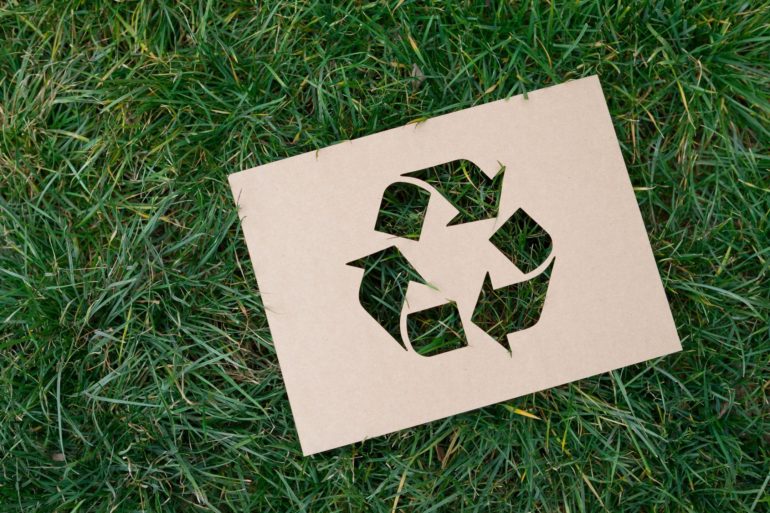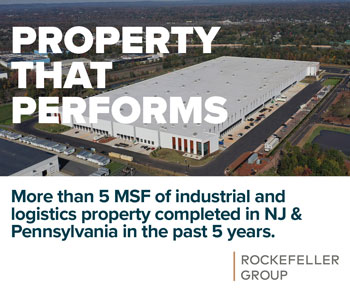By Michael G. McGuinness
April 22 is Earth Day, always a great time to reflect on what we as citizens can do to make the planet a little greener: reducing waste, conserving energy, reusing or donating products and recycling.

With global warming on the rise, recycling makes sense. It saves energy, keeps materials out of landfills and incinerators and provides raw materials for new products — it helps us to make the best use of the resources we have available (water, energy, land, raw materials) and conserve them for future generations. Composting, recycling for organics, converts materials such as food waste and yard trimmings into a valuable soil amendment that contributes to soil health and keeps organic wastes out of precious landfills. Recent headlines caught my attention with reporting that many state and local recycling programs are in jeopardy due to contamination of materials in the recycling waste stream. For some time, China has been the dominant end market for U.S. recyclables. It is now cracking down and, in some instances, no longer accepting our recyclables. This is a huge problem that’s going to disrupt all of us if we don’t quickly find a solution. It’s also an opportunity for New Jersey to rise to the occasion and replace China as our own end market for recyclables. Why not? We have the brains, talent, infrastructure, attitude and appropriately located sites to make it work.
First, we must address the contamination issue, which largely stems from a lack of uniformity among New Jersey municipalities and counties. The state should mandate that all towns have locations for accepting the same types of recyclables and provide resources for implementation. Why should yogurt containers only be recyclable in certain towns? New Jersey could foster an in-state recycling market and industry through incentives, allowing us to become self-reliant by processing our own and other states’ recyclables, thereby generating revenues from nonresidents. Three or four environmental and recycling incubators strategically located throughout the state could be quite profitable.
To increase recycling, we must address two interrelated components: availability and engagement. Availability refers to the collection systems, markets and equipment available that influence and impact recycling options. Your location and the amount of materials or wastes your organization generates shape your opportunities to increase recycling. Availability has several layers: regional, local and within a building (are bins visible and convenient?). When in doubt, questions should be directed to your local government (solid waste, public works or environmental departments). Another fantastic site-specific resource for learning what’s recyclable and where, is the Earth911 sponsored recycling locator. Try it!
Once the option to recycle or compost is available, it’s important to engage and educate. Recycling is an easy, visible way people engage in an organization’s sustainability efforts. Best practices include hosting a kick-off program, keeping it fun, signage, convenient central location, consistency and ongoing communication. For more best practices on improving recycling, see the list of resources.
As a spokesman for New Jersey’s commercial real estate industry, I want to highlight efforts within our sector to improve energy efficiency and make the world more sustainable. After all, the built environment, including commercial and residential structures, consumes 40 percent of the energy in the U.S., including 70 percent of all electricity. Here’s a look at organizations working toward this goal:
The U.S. Green Building Council has developed one of the best-known and most-used energy-efficiency standards in construction — LEED. According to the USGBC, more than 2.2 million square feet of space earns LEED certification every day, with more than 90,000 projects that span commercial and residential real estate using the standard. LEED buildings conserve energy, water and other resources, attract tenants and cost less to operate. Another rating system growing in popularity is the WELL Building Standard. Introduced in 2014, WELL “provides a platform to help support and advance human health through performance- and evidence-based approaches to the design, engineering and operation of buildings,” according to a recent article in NAIOP’s Development magazine.
At least two Washington D.C.-based organizations, the “Alliance to Save Energy” and the “Institute for Market Transformation,” are focused on advocacy to achieve more energy-efficient buildings. IMT especially emphasizes energy efficiency in commercial spaces, and makes the business case for efficiency, including the “economic, environmental and social benefits of more-efficient buildings.” The organization’s website is packed with fact sheets, case studies, blog posts and other sources of information on green construction in commercial buildings.
The U.S. government has several programs focused on energy efficiency in buildings. The Environmental Protection Agency’s Energy Star program has tools for residential and commercial structures, including Portfolio Manager, an online tool that helps property professionals measure and track energy use, water consumption and greenhouse gas emissions in buildings.
The Department of Energy’s Advanced Research Projects Agency-Energy (ARPA-E) is hard at work on a variety of projects, including the Single-Pane Highly Insulating Efficient Lucid Designs (SHIELD) program, which “aims to develop innovative materials that will improve the energy efficiency of existing single-pane windows in commercial and residential buildings,” according to the SHIELD website. “Technologies created through the SHIELD program seek to cut in half the amount of heat lost through single-pane windows in cold weather. These materials would improve insulation, reduce cold weather condensation and enhance occupant comfort. The technologies could also produce secondary benefits, such as improved soundproofing, that will make retrofits more desirable to building occupants and owners.”
These are just a few of the efforts underway to increase energy efficiency in the built environment. On this Earth Day, let’s hope that New Jersey and our nation will put more brilliant minds to work on solving these pressing problems before it’s too late.
(Portions of this article were obtained from the U.S. EPA Website re Managing and Reducing Wastes: A Guide for Commercial Buildings, https://www.epa.gov/smm/managing-and-reducing-wastes-guide-commercial-buildings)
Michael McGuinness is CEO of NAIOP New Jersey and has led the commercial real estate development association since 1997. NAIOP represents developers, owners, asset managers and investors of commercial, industrial and mixed-use properties, with 830 members in New Jersey and over 19,000 members throughout North America.










